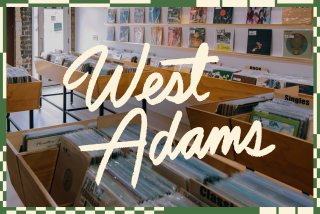Letters : Changing West Adams
- Share via
I am compelled to reflect on the issue of gentrification, after reading Sam Hall Kaplan’s “The Historic Elegance of West Adams” (Nov. 8).
Gentrification has been described as a form of private market urban revitalization. The major benefit undoubtedly has been the restoration and preservation of architecturally significant structures in the inner city. . . .
As gentrifiers begin to support middle-class life style and cultural aspects of the area that enhance their dwellings as an investment and attract the gentrifier’s dollar, living costs begin to rise and the urban poor are inevitably priced out of the housing market. Changing the neighborhood to make it a more desirable investment factor is one of the major goals of the gentrifier.
I believe that we need to be sensitized to the subtle economic forces that are fueling the “revitalization” of West Adams Boulevard, and their negative effects on the indigenous residents of that community. While historic preservation has social and artistic benefits for the community at large and economic benefits for the upper-middle-income investor, we should be aware that the predominantly ethnic minority residents usually receive little or no benefit. To me, the most objectionable aspect is the seemingly disdainful and arrogant manner in which many of the newcomers have arrived.
With the community’s increasing interest in the area’s architectural significance, the local property owners should be encouraged to refurbish their residences to their former glory, perhaps with the technical assistance of the preservationists. A UCLA planning professor has called this process “incumbent upgrading,” whereby inner-city residents initiate the beautification of their own neighborhoods. Then, no one gets displaced, and communities remain intact.
GERALD G. GUBATAN
Los Angeles


